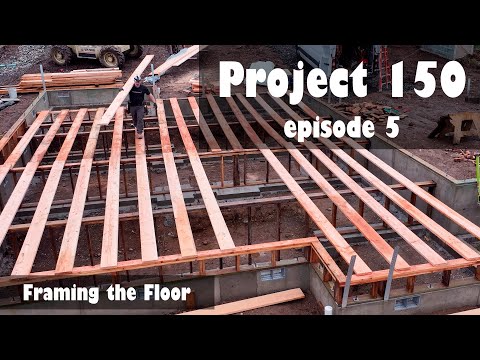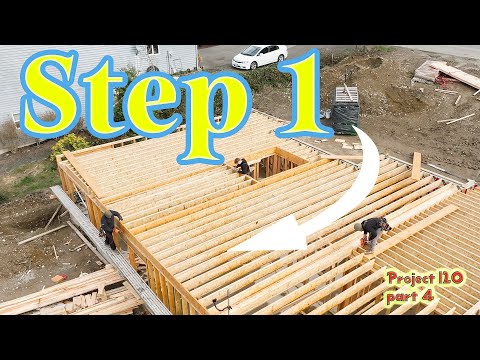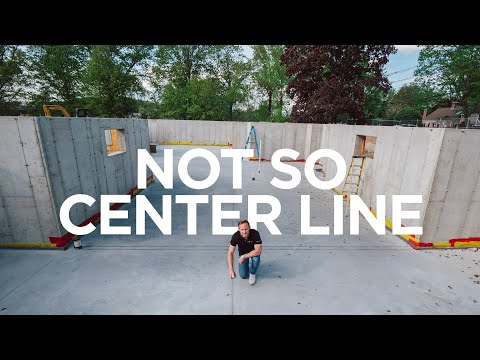Laying out basement walls is not as simple as butting the foundation and marking a number because foundations are rarely square. The first thing the framers lay out is the mudsills, which establish the outside edges of the house's framing.
Square mudsills provide an accurate reference for laying out other parts of the house—like the floor that sits atop them and the walls that sit below them in the basement.
Of course, if you are building a house with a dirt crawlspace, this video will be a waste of time, so, move on to the next one.
Snap the longest wall first and use it as a reference
One way to simplify the layout in a basement is to plumb down from the mudsill along two perpendicular walls and slap a line one foot in. Now you can burn a foot on measurements and not have to goof around with hooking mudsills.
Because three of the walls are short in this daylight basement, Tim hooks the mudsill, holds a level on the number he is looking for, and plumbs down from that point, where he marks it—making sure to mark the correct side of the level. And then he double-checks his measurement.
He and his helper, Kyle, begin with the longest walls and work their way to the shortest, at which point they don't need to pull measurements from the mudsills anymore.
With any luck, the plumbers put their pipes in the correct places. In Tim's case,
"One of the plumbers used to be a framer, so he's smart."
Tips on getting the right numbers from the blueprints onto the concrete slab:
- Look before you snap. Sometimes it is obvious that a line will be in the wrong place, and too many lines cause problems later on.
- Double-check your numbers
- Double-check which side of the wall you are measuring to
- Snap both sides of the wall to reduce chances for error
- When pipes are close to the line, avoid string line rubbing the pipe by measuring wall thickness on both sides of the pipe and snapping the line in two parts.
- Double-check your thinking and your math.
- Snap through some wall intersections to provide a reference for later lines.
- Subscribe to Awesome Framers YouTube channel











